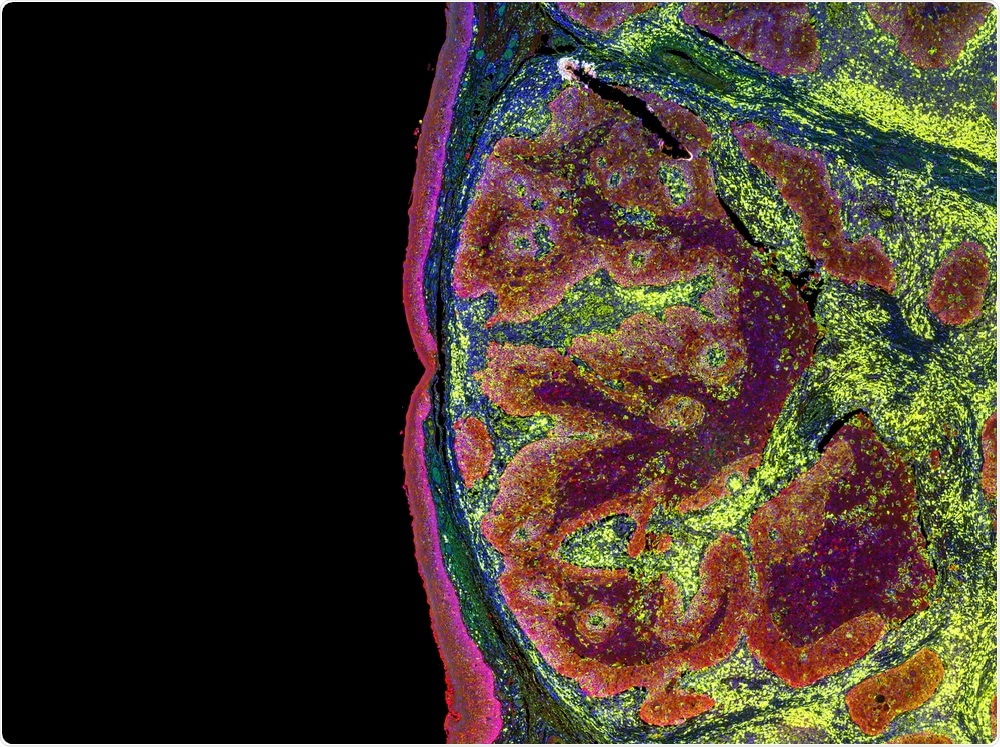Researchers from Northwestern Medicine unearthed the epigenetic processes involved in the regulation of multiple oncogenes in glioma cells—processes that promote overall glioma tumor growth and resistance to therapy. The research has been published in the Clinical Cancer Research journal.

Tumor Sample. Image Credit: Carl Dupont/Shutterstock.com
The research carried out in the lab of Adam Sonabend, MD, associate professor of Neurological Surgery, might direct personalized treatments for these cancers, which are the more frequent types of primary brain tumors in adults and are nearly incurable.
Gliomas are different from other cancers due to the specific epigenetic mechanisms involved in the transcriptional regulation of various tumor phenotypes; however, these mechanisms are not fully known, specifically for most cases of these tumors in adults, says Sonabend.
Earlier studies indicated topoisomerase IIB (TOP2B), an enzyme known to de-coil chromatin structure, is overexpressed in a small subset of glioma tumors. This enzyme de-coils DNA by splicing it, enabling it to unwind, and then ligating the DNA back directly after this relaxation mechanism.
Sonabend further adds that the recent research indicates that this mechanism allows the interaction between distant areas of the genome, generating long loops essential for turning on oncogenes.
If you consider how TOP2B is expressed in a subset of these tumors, in the subset of the tumors where TOP2B is elevated, it might be regulating specific genes by messing up with the structure of the chromatin. So, we were really interested in learning what exactly are the sites where TOP2B is actively cutting DNA, and not just bound to it.”
Adam Sonabend, Study Senior Author and Associate Professor, Neurological Surgery, Northwestern University
Sonabend and his associates headed by Edgar Gonzalez Buendía, PhD, a postdoctoral fellow in the Sonabend laboratory, employed complementary genetic sequencing techniques to examine glioma cell lines and human glioma specimens to pinpoint the location of TOP2B in the genome and where it spliced the DNA.
Eventually, the researchers carried out additional sequencing, gene silencing, and mouse xenograft experiments to analyze glioma cells injected with the chemotherapy drug etoposide, which enables TOP2B to “cut” DNA but not “paste” it back into the genome.
Upon comparison of the injected cells with the control cells, the researchers found TOP2B in the enhancers and promoters of two well-established oncogenes generally found in gliomas: PDGFRA and MYC. Moreover, the researchers observed TOP2B both in the introns and overall body of these oncogenes, indicating TOP2B’s multiple roles in the transcriptional regulation of oncogenes expressed in these cancers.
The observations are an initial step to a novel personalized medicine approach for patients who would benefit from TOP2B-inhibiting drugs by pinpointing the oncogenes they express, remarked Sonabend.
The next step is precisely that, to begin to understand whether we can predict which patients will benefit from TOP2B inhibitors.”
Adam Sonabend, Study Senior Author and Associate Professor, Neurological Surgery, Northwestern University
Source:
Journal reference:
Gonzalez-Buendia, E., et al. (2021) TOP2B enzymatic activity on promoters and introns modulates multiple oncogenes in human gliomas. Clinical Cancer Research. doi.org/10.1158/1078-0432.CCR-21-0312.